Vulture’s Nate Jones wrote an interesting piece earlier this year where he argued that a TV show’s second season is either its best or worst. Of course, there are exceptions to this “rule” but I certainly buy this argument in the general sense, as the sophomore year is when a show usually hones in on what it’s going to be, for better or worse. Off the top of my head, Friday Night Lights and Homeland come to mind as just atrocious second seasons, but I think there are a lot more shows out there that improved considerably in their second years. It makes sense, as many TV shows are still trying to figure out their characters and structures in Season 1 and you hope that that stuff falls into place by year two. Sometimes, even bad TV shows can become great in the transition from Season 1 to 2! While not every one of the following 12 TV shows had bad first seasons, it’s hard to deny they became noticeably better in Season 2.
12. Chuck
Chuck is a show that sadly seems to have been largely forgotten, even though it only ended in 2012. Josh Scwartz and Chris Fedak’s fun comedy/spy series about an underachieving retail worker who starts working for the CIA after top secret software is unknowingly uploaded into his brain had a fiercely loyal fanbase that saved the series from cancellation more than once. However, if you were to judge the series on its first season alone, there wouldn’t be all that much worth saving. Chuck’s first batch of episodes never really seemed to fully deliver on its premise and suffered from some weak characterization in places.
In particular, Joshua Gomez’s Morgan Grimes is borderline unbearable in Chuck’s early episodes, but becomes much more tolerable – even likable – as Season 2 unfolds. More interesting and elaborate missions, a better handling of the budding Chuck-Sarah romance, and just a general uptick in quality (the Christmas episode in particular is just the best) also went a long way in helping turn Chuck into a legitimately good show in its second season.
 Source: Screenshot via NBC
Source: Screenshot via NBC11. Santa Clarita Diet
Santa Clarita Diet was a surprise hit on Netflix when it debuted in early 2017. Starring former Hollywood A-lister Drew Barrymore and solid role actor Timothy Olyphant (from HBO’s Deadwood and FX’s Justified) as Sheila and Joel, a married couple who need to suddenly adapt the wife’s disturbing… ummm… illness. What follows is a horror-comedy series, complete with plenty of blood and guts, about Barrymore’s character becoming undead, with an insatiable hunger for human flesh, while remaining completely normal otherwise. It’s a zombie show, with a twist. The first season focused on the relationship between the couple, as they figure out how to navigate their social life, parenting habits, and career prospects in the wake of Sheila murdering and eating strangers (and in one case, the neighbor). It’s smart, hilarious, and Barrymore and Olyphant have an unmistakable chemistry together — it’s almost cute at times, even as she licks blood off her fingers like it’s excess BBQ sauce.
The second season managed to be even better. Rather than simply repeat the same conflicts from the first season (Sheila is hungry, what do we do?), the show smartly worked on expanding its small universe. Joel and Sheila are now trying to get to the bottom of her mysterious condition, as they investigate a strange Serbian mythology that seems to be the source. New characters like Marsha and Paul (who are members of the Knights of Serbia, an ancient zombie protection society) and Ramona (who also turns out to be a zombie) contribute to the overall plot, but the real breakout star of season two is Liv Hewson, who plays Joel and Sheila’s daughter, Abby. She is outstanding as a rebellious high schooler torn between trying to help her parents and simply being fed up with their crap (and murdering). Santa Clarita Diet avoided all of the pitfalls that many shows fall into after a successful first season by cleverly switching gears, adding interesting new characters (and putting more focus on some previous ones), and expanding the overall story arc to create compelling new mysteries. Bonus: Nation Fillion returns in season two as the reanimated head of Gary, Sheila’s former co-worker and first victim!
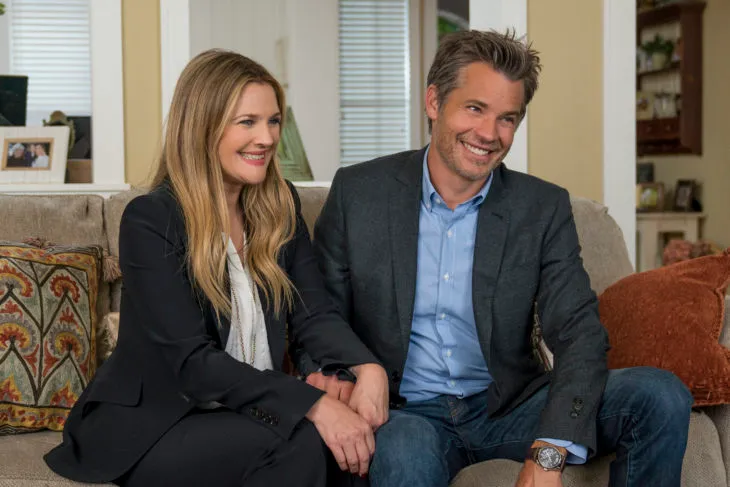 Source: Screenshot via Netflix
Source: Screenshot via Netflix10. Terminator: The Sarah Connor Chronicles
With how far the franchise has fallen over the last decade or so, it’s still kind of hard to believe that a Terminator TV show made it to air … or that it was actually pretty good. Granted, I don’t think the first season – which consisted of only 9 episodes – was must-watch TV, but it was better than it had any right to be. Then Season 2 came along and Terminator: The Sarah Connor Chronicles got much more ambitious. The introduction of Shirley Manson as an elite CEO who’s actually a deadly cyborg was a cool twist and the show delved even deeper into the question of Cameron’s (Summer Glau) humanity. There were still some clunker episodes here and there, but that’s true of any drama series with 20+ episodes seasons. Things were gearing up to be even better in Season 3 with a surprise time jump, but Terminator was unfortunately cancelled before we ever got to see where it would go next.
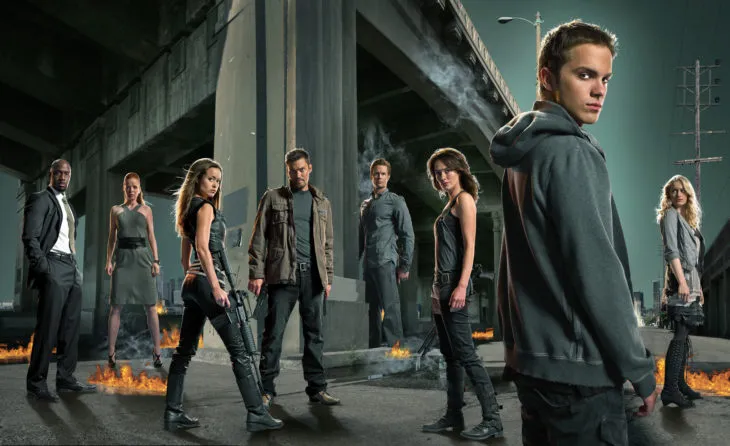 Source: Screenshot via Fox
Source: Screenshot via Fox9. Buffy the Vampire Slayer
Anyone experiencing Joss Whedon’s seminal late 90s high school drama/fantasy series for the first time probably had a similar reaction as I did upon watching the first season — it’s just okay. Yes, Buffy the Vampire Slayer doesn’t put its best foot forward in its early episodes, which I think has to do with the writers not quite having figured out what to do with much of the supporting cast yet, as well as striking a tone that too often veers into silly, campy territory. Sticking with Buffy through its growing pains is worth it though, as the show improved considerably in its second season.
Not only does every character start to come into their own (especially Cordelia, who was unbearable at the beginning of Season 1), but the Buffy/Angel romantic subplot is gut-wrenching stuff, culminating in a two-part finale that deserves to be called one of the greatest season finales in TV history. Buffy the Vampire Slayer would go on to hit its peak in Season 3 before venturing into later seasons that range from good to just plain bad (*cough Season 7 *cough), but Season 2 is where the show transitioned from mild curiosity to important, era-defining television.
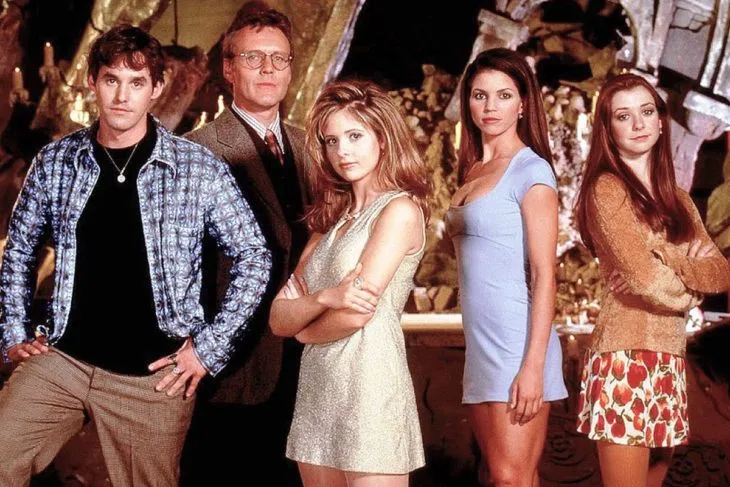 Source: Screenshot via The WB
Source: Screenshot via The WB8. The Simpsons
Even though it’s much better than it’s given credit for, the debut season of The Simpsons is one I, and I’m sure many other fans, generally avoid revisiting. America’s longest-running sitcom was quite strong out of the gate, but those early episodes depict a considerably different series than the one that would go on to become a critically-acclaimed institution just a few seasons later. The Simpsons’ second season doesn’t quite hit the “Golden Age” era, which is generally accepted as running from Season 3-8, but it’s certainly on the cusp.
For one thing, the show earned its first Emmy for the episode “Homer vs. Lisa and the 8th Commandment” but more importantly, every facet of the show represented an improvement over Season 1. The animation was more consistent, the supporting cast was beefed up dramatically (special shout out to the introduction of the late, great Phil Hartman’s Lionel Hutz), and the show as a whole focused less on being just another family sitcom in animated form, and more on the brilliant satire that would come to define it throughout the 1990s. Season 2 is far from the best The Simpsons has to offer, but it put the show on a path to greatness all the same.
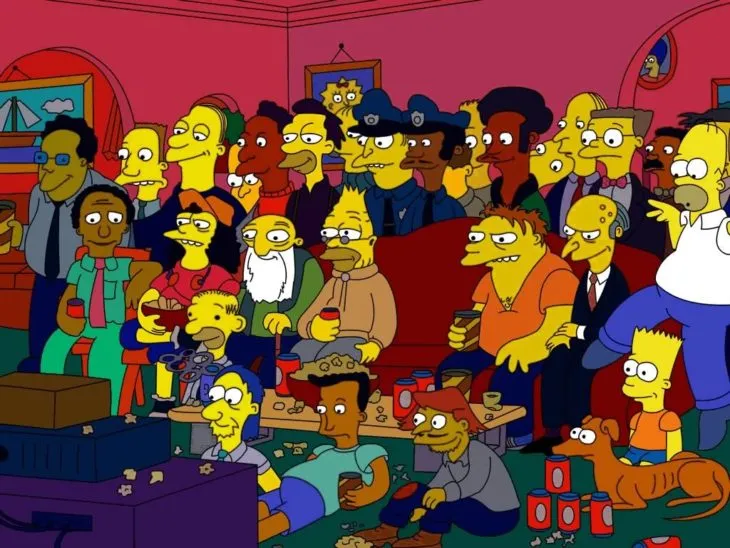 Source: Screenshot via Fox
Source: Screenshot via Fox7. It’s Always Sunny in Philadelphia
This FX comedy series is currently in its 13th season, making it kind of hard to believe that it almost didn’t get a second. Created by Rob McElhenney and Glenn Howerton, who also star alongside producer Charlie Day, It’s Always Sunny in Philadelphia’s first season was a hilarious, taboo-breaking riot in its own right, but Season 2 (and subsequent seasons for that matter) was better for one simple reason: Danny DeVito. These days, it’s hard to imagine It’s Always Sunny without DeVito’s hilariously repulsive Frank Reynolds, but he wasn’t added to the cast until Season 2. DeVito’s addition may have been purely a business decision — according to McElhenney, FX was going to cancel the show unless they added a big name star to attract a larger audience — but it ended up making the show better in both the short and long term.
 Source: Screenshot via FX
Source: Screenshot via FX6. Arrow
The first season of Arrow deserves credit for being better than it had any right to be. Although it definitely still had that CW feel to it (read: cheesy melodrama), the premise was well-realized, Stephen Amell was likable enough as the titular hero, and the action was a step up from most live-action comic book shows. That being said, much of the supporting cast left something to be desired, with Katie Cassidy’s Laurel Lance in particular treading water with little interesting to do, and the villain-of-the-week structure was laid on a little too thick.
Thanks to some small, but significant changes, Arrow’s sophomore season was considerably more enjoyable to watch. The introduction of Caity Lotz as Black Canary and the increased focus on Emily Bett Rickard’s lovable tech genius Felicty Smoak gave the show a much-needed boost in the female character department, while Manu Bennett’s transition from Oliver Queen’s ally to sworn enemy Deathstroke was a fascinating development to watch play out. Whether or not you’ve fallen off of Arrow in the years since, it’s hard to deny that the show improved considerably in its second season.
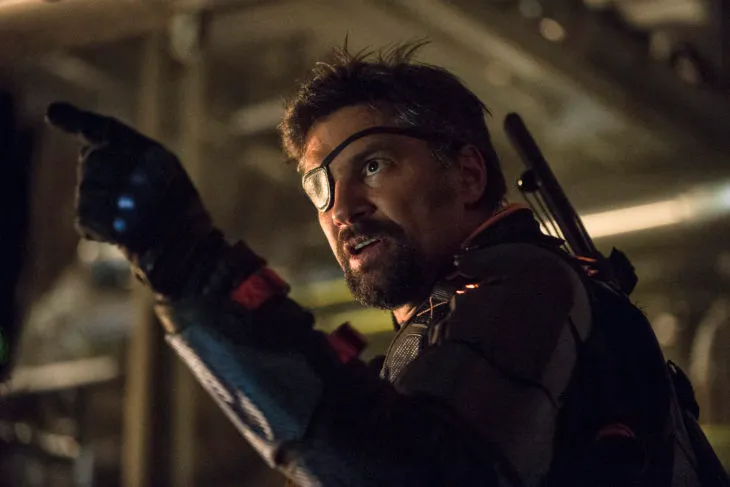 Source: Screenshot via CW
Source: Screenshot via CW5. Hannibal
Bryan Fuller’s gone-too-soon horror masterpiece arrived fully formed in its first season, which depicted the formation of the relationship between troubled FBI special investigator Will Graham (Hugh Dancy) and Dr. Hannibal Lecter (Mads Mikkelsen), a forensic psychiatrist who also happens to be a cunning, cannibalistic serial killer. However, while the back half of the season fired on all cylinders, the first five or six episodes were a bit plodding, with a villain-of-the-week structure that made Hannibal feel too similar to other murder procedurals, which was a shame because it was a far superior show in every other area.
Fortunately, Fuller and his team hit the ground running in Season 2 and fully capitalized on the beautifully grotesque imagery and the cat-and-mouse dynamic between Graham and Lecter that helped Hannibal stand out from its contemporaries in Season 1. The first episode begins with a violent flash-forward, signalling a bolder story direction ahead that would strip away the villain-of-the-week plots in favor of focusing more on the intense relationship between the show’s two central characters. Though the Verger twins subplot stalled things out a bit later in the season, the riveting finale more than made up for it.
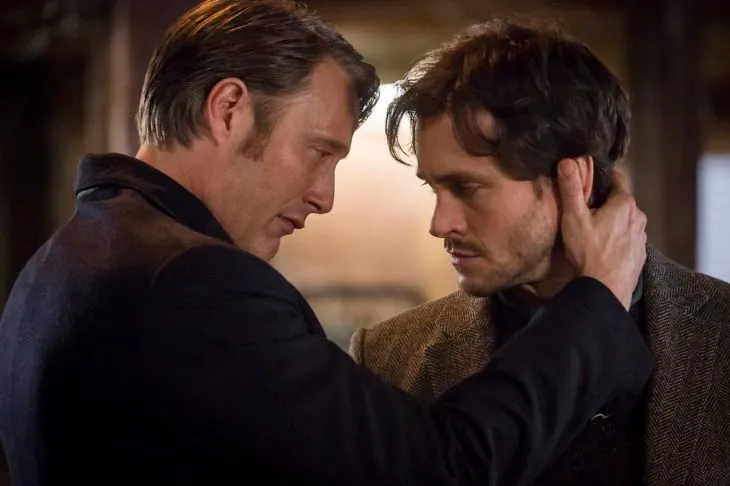 Source: Screenshot via NBC
Source: Screenshot via NBC4. Halt and Catch Fire
One of the best dramas of the last decade that nobody watched, it’s a small miracle that Halt and Catch Fire even got a second season (it would end after four seasons in 2017). Not only were the ratings low for Christopher Cantwell and Christopher C. Rogers’ AMC drama about the personal computer revolution in the 1980s, but the first season didn’t get off to a strong start. While the premise was interesting, the focus on Lee Pace’s hotshot businessman Joe MacMillan felt a little too familiar in a post-Mad Men world (fitting, considering Halt was brought in to help fill the void left by Mad Men ending). Flash forward to Season 2, which shook things up by shifting the focus away from Joe and brilliant computer engineer Gordon Clark (Scoot McNairy) to the partnership between Gordon’s wife Donna (Kerry Bishé) and programmer Cameron Howe (Mackenzie Davis), who branch off to start their own internet gaming company called Mutiny.
While both Pace and McNairy continued to be essential parts of the ensemble, it became clear that the beating heart of the show was Donna and Cameron’s working relationship and friendship; two brilliant women who attempt to carve out place for themselves in an industry that was hostile to women in general at the time (and still is, to a degree). Halt and Catch Fire is a brilliant series in its entirety, but Season 2 is the point where it transitioned from merely great to exceptional. It’s just a shame more people didn’t watch it.
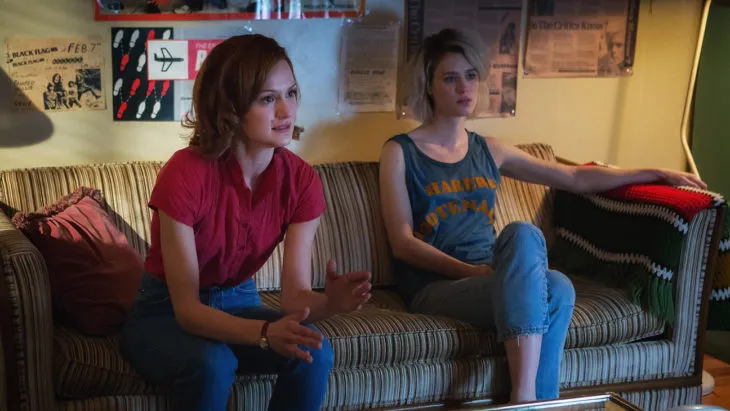 Source: Screenshot via AMC
Source: Screenshot via AMC3. The Office
Though it deservedly went on to become one of the most beloved sitcoms of the 2000s, there was a time when the prospect of an American version of The Office was considered blasphemy by some (to be fair, some fans of the British version still feel this way). After all, the short-lived BBC version co-created by and starring Ricky Gervais was a groundbreaking comedy series and it was difficult to see how the US version could possibly live up to it, let alone surpass it. Debuting on NBC in spring 2005, the first few episodes of The Office remake were rough, to say the least. In fact, the pilot episode was essentially just a copy of the UK version’s pilot, right down to the same archetypes for the main characters.
Thankfully, The Office’s growing pains didn’t last long, as the show hit the ground running right from the start of its second season that fall, which remains one of the show’s best. Steve Carrell transformed Michael Scott from an inferior David Brent into a sad-sack boss who just wanted his employees to love and admire him, while the Jim-Pam romance became one of the best “will they/won’t they?” storylines in sitcom history. Add in some absolute classic episodes such as “Booze Cruise, “The Injury,” and “Casino Night” and you have a sophomore season that turned The Office from also-ran into must-watch TV.
 Source: Screenshot via NBCUniversal Television Distribution
Source: Screenshot via NBCUniversal Television Distribution2. Parks and Recreation
Another NBC comedy released as a midseason replacement, Parks and Recreation’s problem was that it felt too much like The Office in its early episodes. A political satire following idealistic small-town parks department deputy director Leslie Knope (Amy Poehler), Parks and Rec was a little too focused on the bureaucratic side of things in its first season, with the main plot involving a quest to fill a giant hole in the middle of a suburban neighborhood.
Creators Michael Schur and Greg Daniels began to slowly retool things in Season 2, with the focus shifting more to Leslie’s co-workers and even the town of Pawnee as a whole, which would come to represent American small-mindedness to greater degrees as the series progressed. In this way, Parks and Rec became more of a hangout comedy following a group of hilarious, likable friends, with the political satire stuff as a strong backdrop. Once Adam Scott and Rob Lowe officially joined the cast near season’s end, Parks and Recreation truly hit its stride and became arguably one of the best comedy series of the decade.
 Source: Screenshot via NBCUniversal Television Distribution
Source: Screenshot via NBCUniversal Television Distribution1. The Leftovers
It’s totally unfair to call the first season of The Leftovers disappointing because, well, it’s not. Based on Tom Perrotta’s novel of the same name, The Leftovers essentially tackled Perrotta’s story in the first season and did a fine job of it too. Showrunner Damon Lindelof’s vision of a world in which 2% of the population suddenly disappears, leaving the other 98% behind to try and make sense of it all, is emotionally-draining and complex right from moment one, and the first season finale sets up some intriguing future storylines. But then Lindelof and Perrotta decided to blow the whole thing up and run wild in Season 2, and the results were brilliant, to say the least.
The Leftovers was already a weird show to begin with, but things get completely bonkers in Season 2. The season starts with an unexplained scene set thousands of years in the past and stays unmoored from there, introducing a whole new setting and set of characters before slowly bringing back familiar elements from Season 1. Even the opening credits take a dive off the deep end! The result is that by the time one of the characters comes back from the dead not once, but twice, it’s hard not to be fully on board with the show’s new direction, if only to see what unlikely places it’s going to go next. It also doesn’t help that the performances are top-notch, with Carrie Coon in particular turning in Emmy-worthy work as a mother who lost her entire family to “the Departure”. By finally figuring out how to marry its complex character studies with its unique take on magical realism, Season 2 of The Leftovers is about as close to perfect prestige TV as you can get.
 Source: Screenshot via HBO
Source: Screenshot via HBO